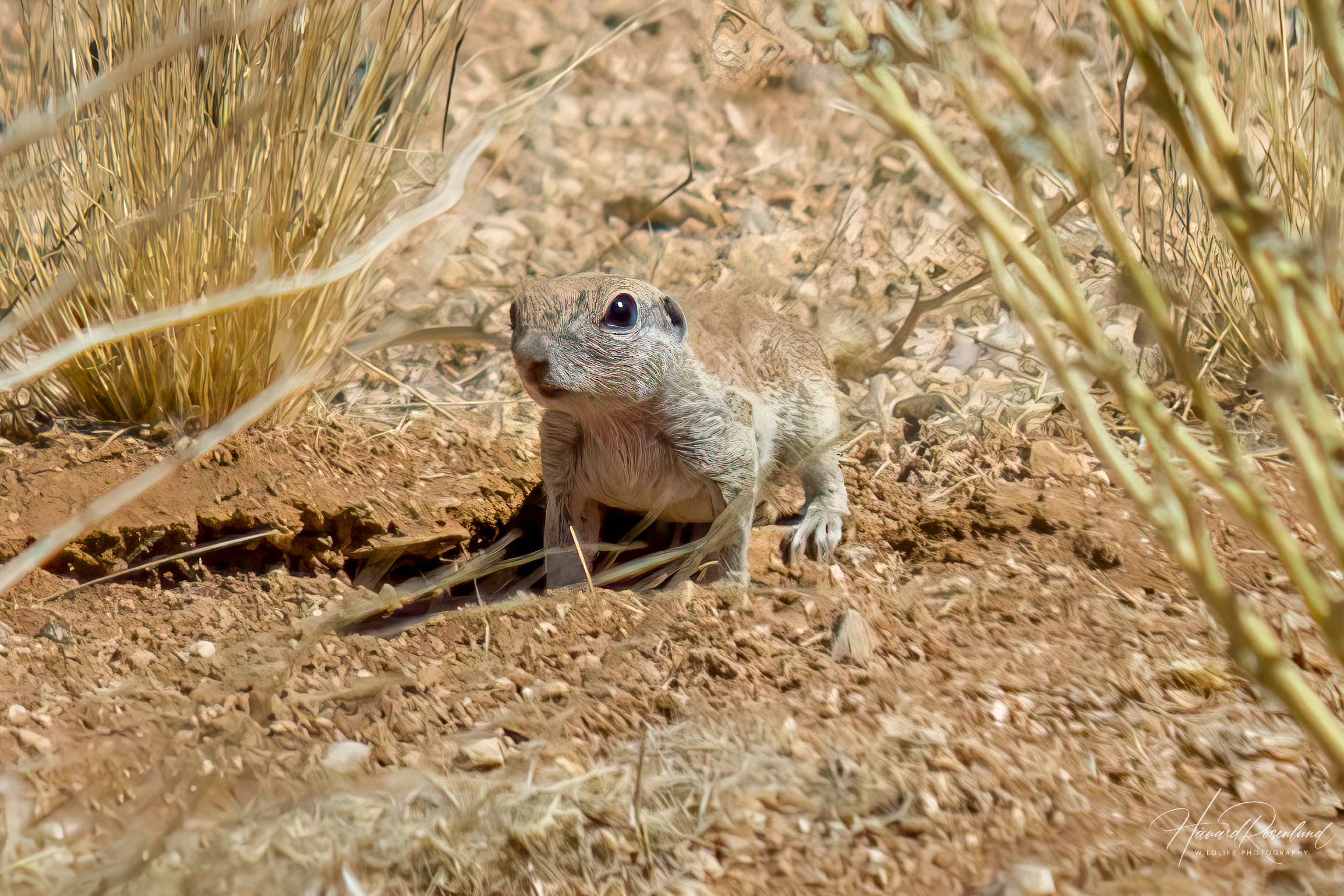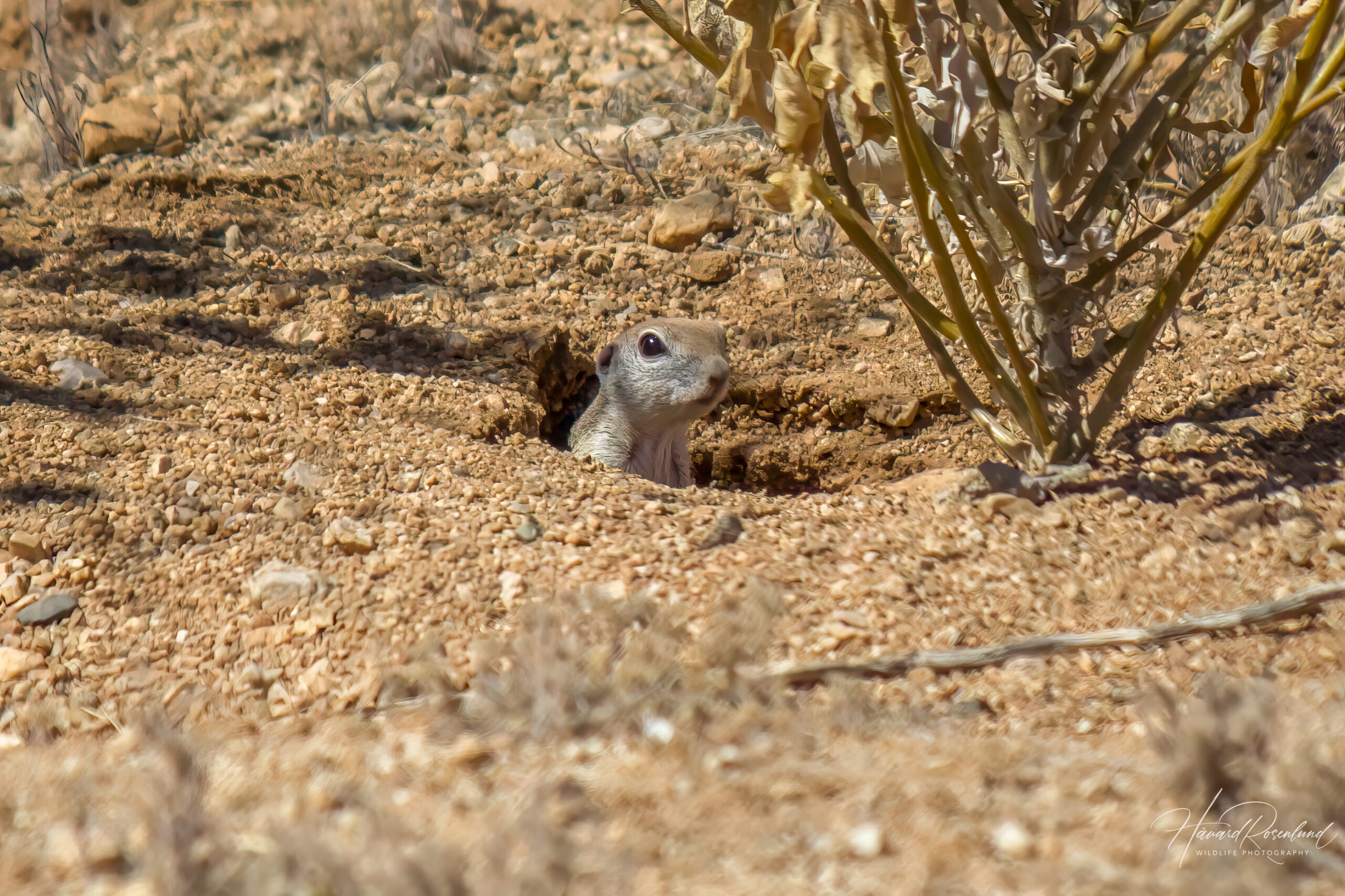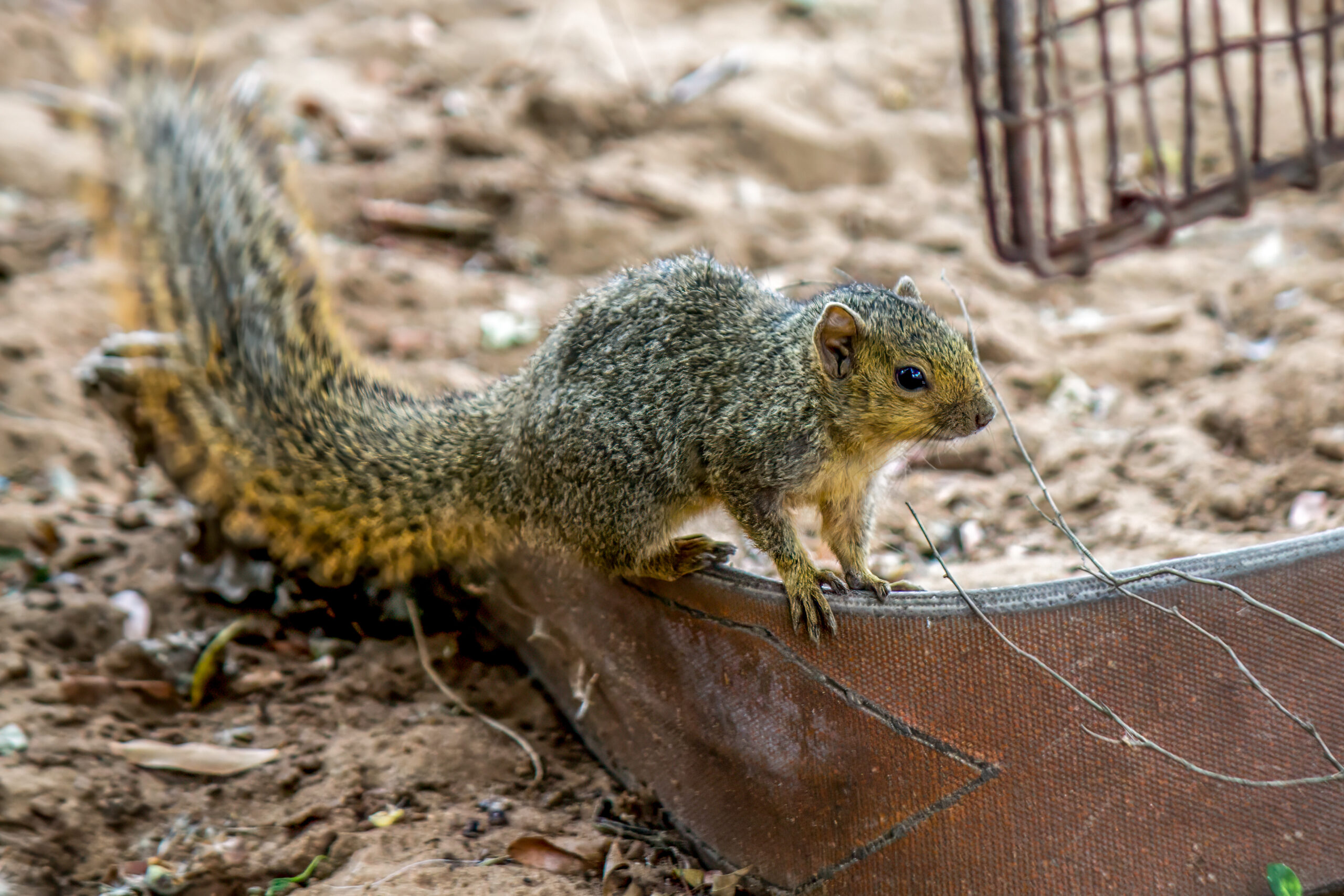Round-tailed Ground Squirrel
(Xerospermophilus tereticaudus)
Description
The round-tailed ground squirrel (Xerospermophilus tereticaudus), native to the arid regions of the southwestern United States and northwestern Mexico, is a small, slender ground squirrel. It measures about 18 to 22 cm (7.0-8.6 in) in length, with a distinctively long, round tail adding an extra 7 to 10 cm (2.7-3.9 in). Its fur is generally a pale buff or gray, serving as excellent camouflage against the sandy desert terrain. It can be distinguished from similar small ground squirrels by its longer and rounder tail and the absence of contrasting markings on its body (which is common for the antelope squirrels in the genus Ammospermophilus).
Diet & habitat
This ground squirrel is found in desert scrub and arid grasslands, often in areas with loose, sandy soil suitable for burrowing. Its diet is primarily herbivorous, feeding on a variety of seeds, fruits, and occasionally green vegetation. During foraging, it stands on its hind legs to survey its surroundings and uses its front paws to manipulate food items. These squirrels have cheek pouches which they use to transport food back to their burrows. They hibernate during the colder months, a behavior not common in many desert-dwelling animals. To warm up, they are often seen basking in the sun.
Social behavior
Round-tailed ground squirrels live in semi-colonies, where individuals keep to their own burrows and chase away intruders that get too close. Females seems to be more social with other females that are close relatives. Their burrows, often with multiple entrances, provide shelter from predators and extreme weather. They communicate through a series of chirps and tail movements, especially when warning others of potential threats. Males are dominant when they are breeding, which is January to March, and females are dominant when raising the young (March-April).
Reproduction
Breeding occurs once a year, typically in early spring. After a gestation period of about 30 days, females give birth to litters of 5-14 young. The juveniles emerge from the burrow after around six weeks and reach sexual maturity by the next breeding season. These squirrels have a lifespan of 4-5 years in the wild.
Status
There are no significant threats to the population of round-tailed ground squirrel, thanks to their adaptability to various desert habitats and prolific breeding. The species is listed as least concern on the IUCN Red List.






